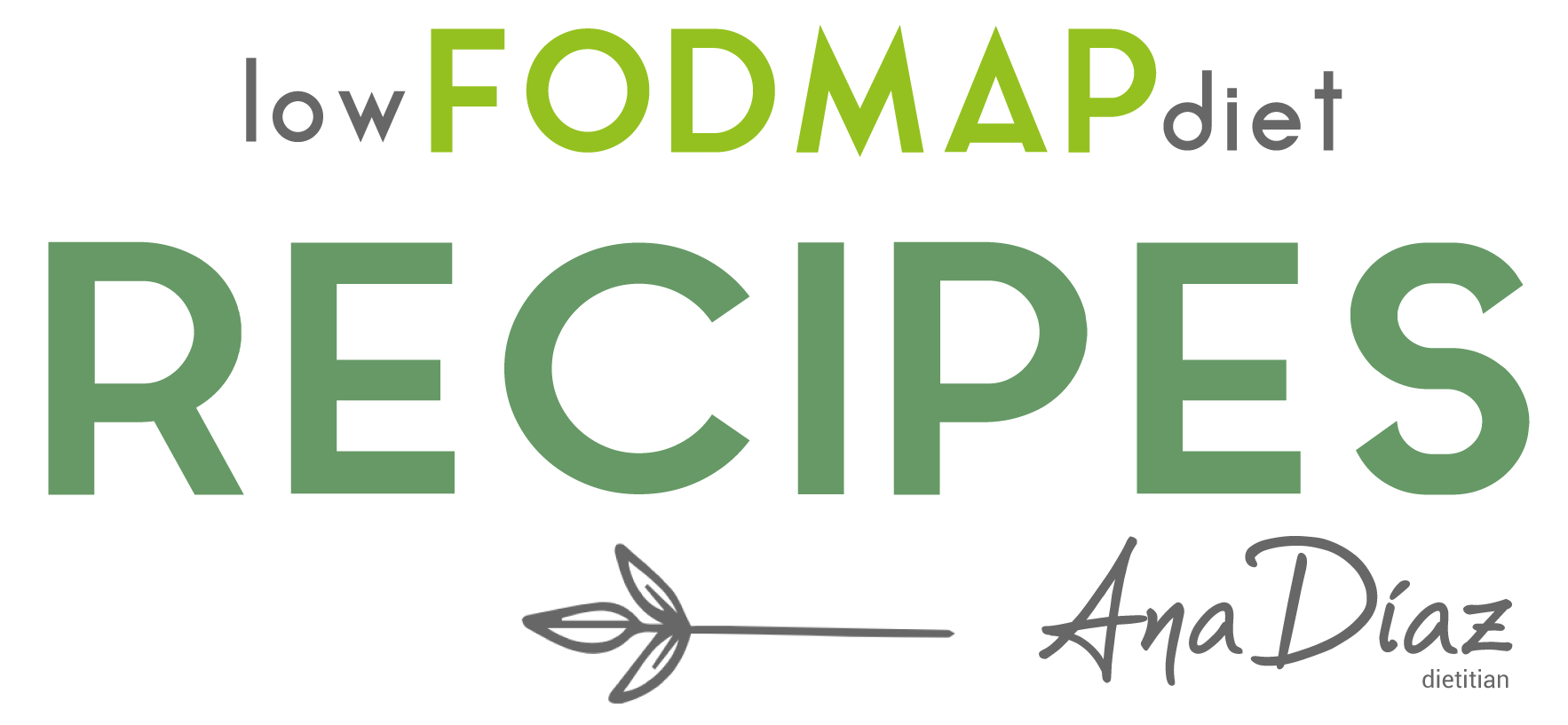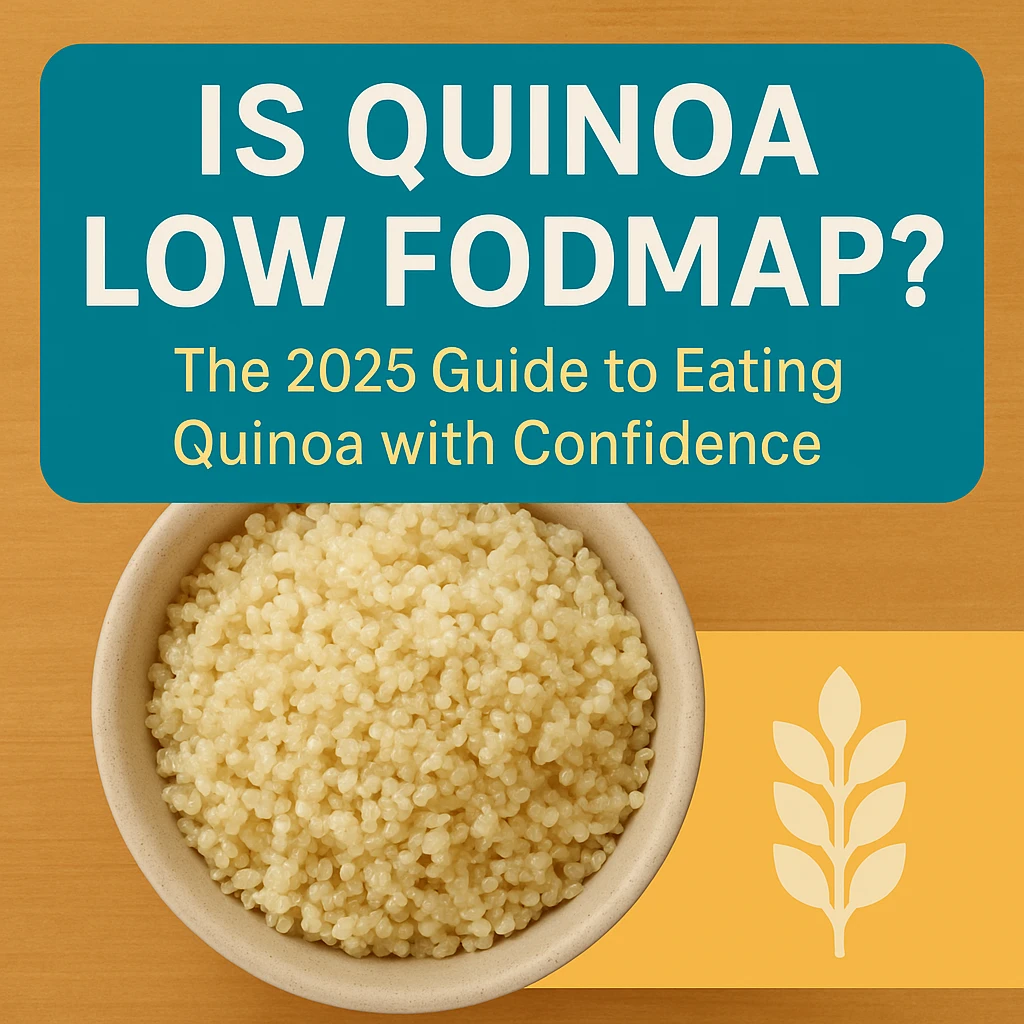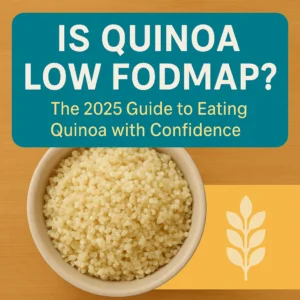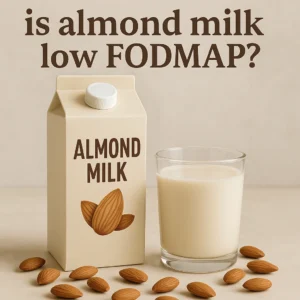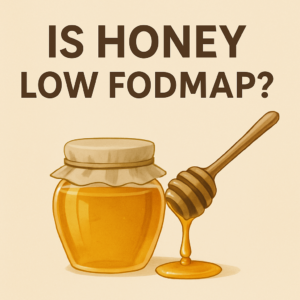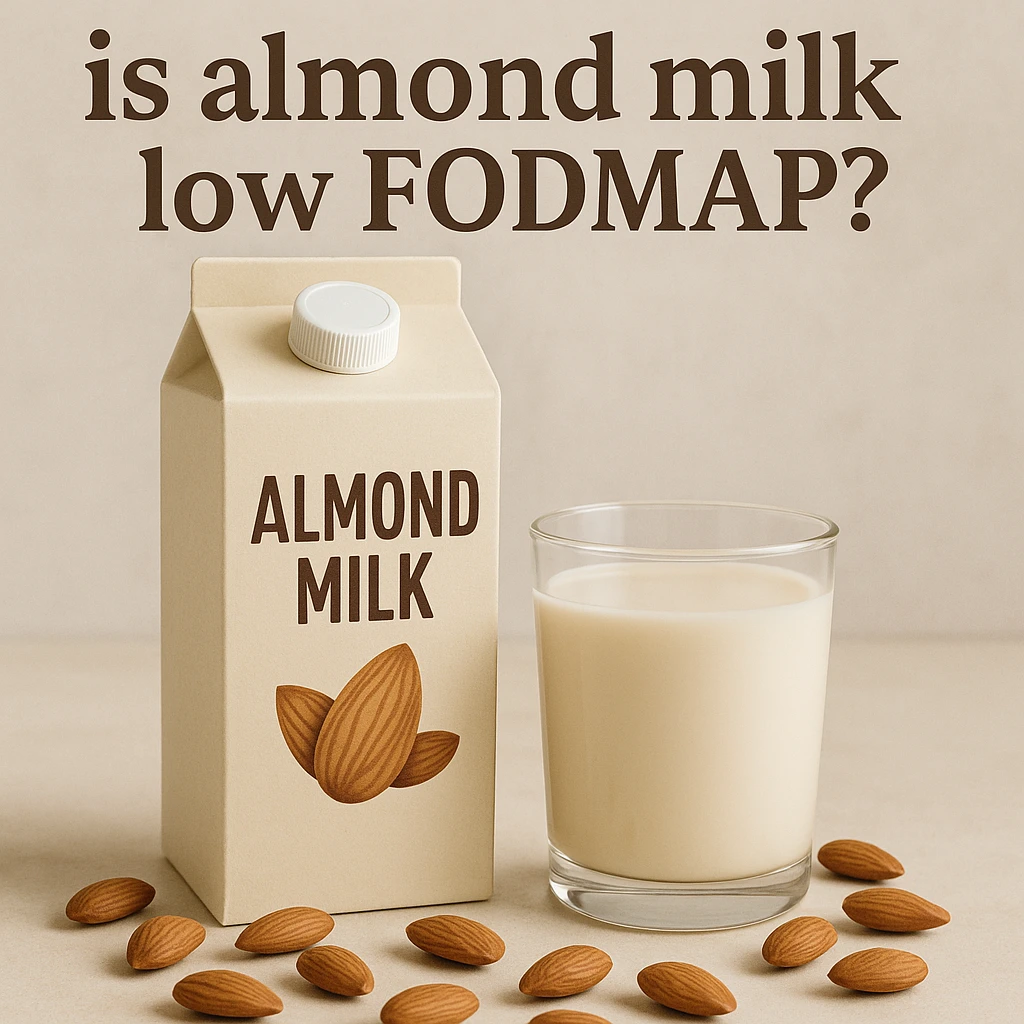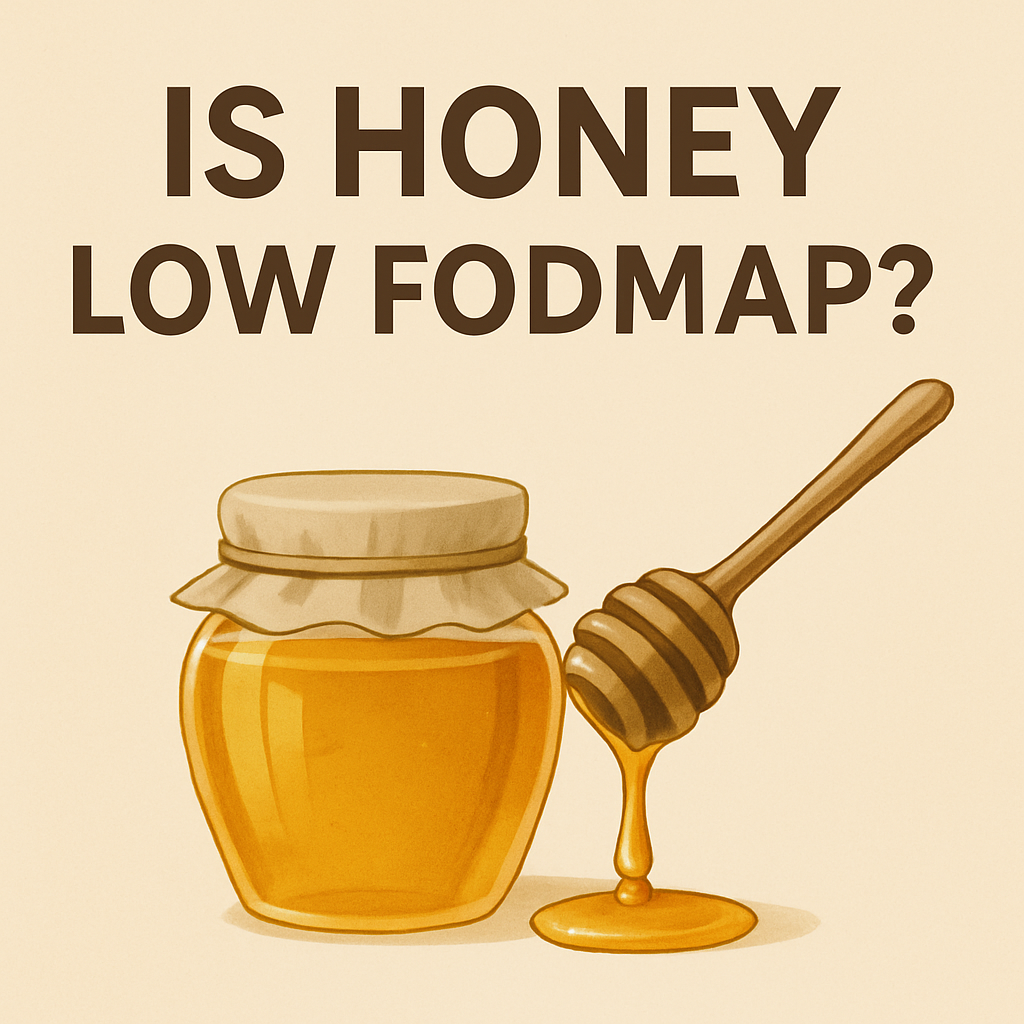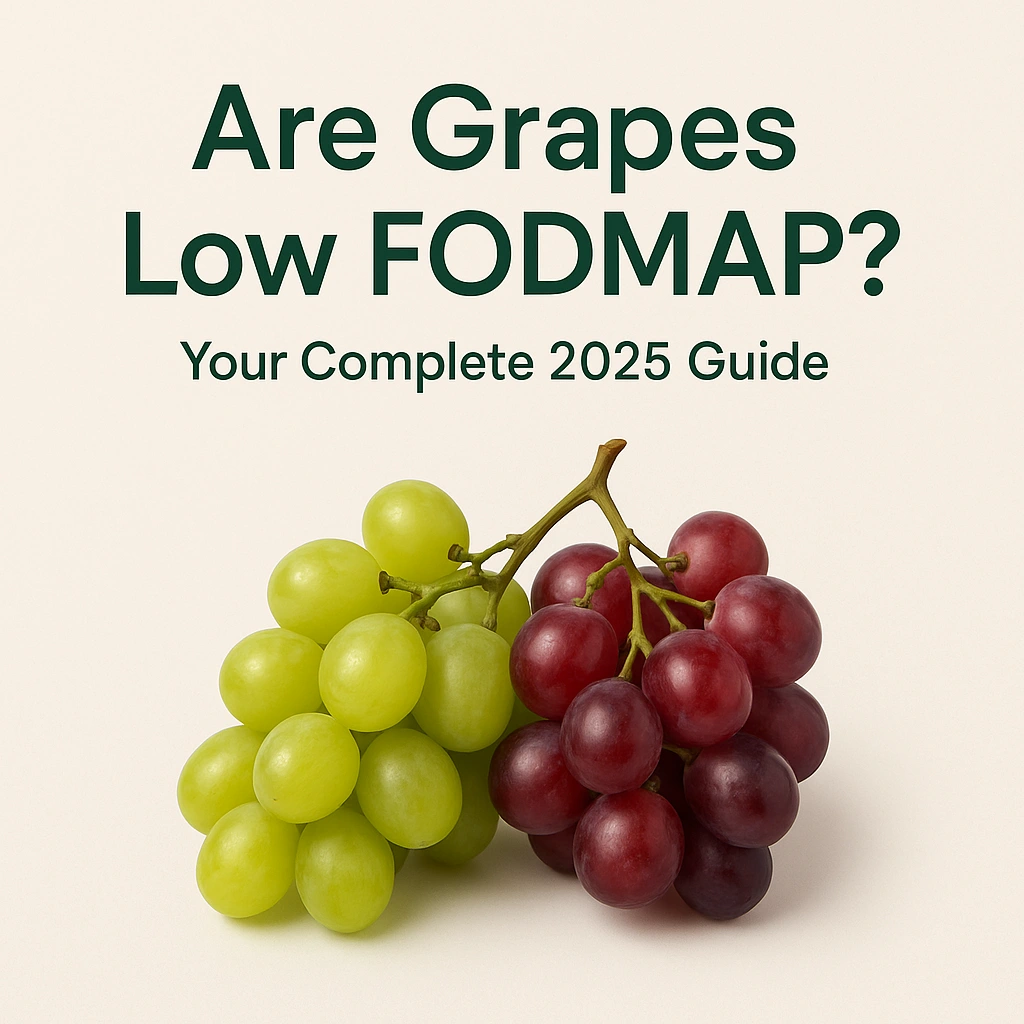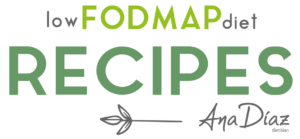If you’re following a Low FODMAP Diet, you’ve probably wondered at some point: is quinoa low FODMAP? The answer, thankfully, is yes, quinoa is low FODMAP in moderate portions and can be an excellent, gentle alternative to higher-FODMAP grains like wheat or barley.
In this article, we’ll explore how quinoa fits into the Low FODMAP framework, what serving sizes are considered safe, and how to prepare and enjoy it without triggering IBS or bloating.
Table of Contents
What Exactly Is Quinoa?
Quinoa (pronounced keen-wah) is a seed native to the Andes, though we often use it like a grain. It’s naturally gluten-free, rich in plant protein, and contains essential amino acids, iron, magnesium, and fibre. Because of its mild taste and versatility, quinoa has become a staple in many Low FODMAP meal plans; from breakfast porridges to hearty salads.
Is Quinoa Low FODMAP According to Monash University?
According to Monash University, which leads global FODMAP research, quinoa has been tested and confirmed to be low FODMAP in standard serving sizes.
Low FODMAP Serving:
- Cooked quinoa: 1 cup (155 g) is considered low FODMAP.
- Uncooked quinoa: about ½ cup (≈ 90 g) dry yields a safe cooked portion.
At these amounts, quinoa does not contain significant levels of FODMAPs, making it a wonderful choice during both the elimination and reintroduction phases of the Low FODMAP Diet.
Varieties of Quinoa: Does the Colour Matter?
You’ll find several types of quinoa: mainly white, red, and black. The good news? All varieties are considered low FODMAP in similar portions.
- White quinoa: The mildest and fluffiest, ideal for everyday meals.
- Red quinoa: Slightly nuttier; holds shape well in salads.
- Black quinoa: Earthier and crunchier; rich in antioxidants.
Their FODMAP profiles are equivalent, so you can choose whichever suits your recipe best.
Nutritional Benefits of Quinoa for Sensitive Digestion
Beyond its low FODMAP status, quinoa provides several digestive-friendly benefits:
- High in fibre (but gentle): Soluble fibre supports gut motility without the excessive fermentation that triggers IBS.
- Complete plant protein: Excellent for vegetarians who can’t tolerate high-FODMAP legumes like lentils or chickpeas.
- Rich in magnesium and iron: Important nutrients that can be lacking when avoiding certain grains or dairy.
- Gluten-free: Naturally suitable for people with coeliac disease or non-coeliac gluten sensitivity.
How to Cook Quinoa for a Low FODMAP Diet
Proper preparation helps make quinoa even easier to digest. Here’s how:
1. Rinse before cooking
Always rinse quinoa thoroughly under cold water to remove saponins, natural compounds that can make it taste bitter and irritate digestion.
2. Cook gently
Combine 1 part quinoa with 2 parts water or low-FODMAP broth. Bring to a boil, then simmer for about 15 minutes.
3. Fluff and cool
Once cooked, fluff with a fork and allow to cool slightly before serving. This helps the starch structure settle, making it lighter on your tummy.
Delicious Low FODMAP Ways to Enjoy Quinoa
Quinoa’s versatility means you can use it at any meal. Try these FODMAP-friendly ideas:
Breakfast
- Warm quinoa porridge with lactose-free milk, cinnamon, and a few blueberries (safe portion: 20).
Lunch
- Quinoa tabbouleh with parsley, cucumber, tomatoes, olive oil, and lemon juice.
Dinner
- Stir-fried vegetables with quinoa and grilled chicken or tofu.
Snack or Side
- Quinoa cakes with a hint of garlic-infused oil (safe alternative to fresh garlic).
Common Mistakes When Eating Quinoa on a Low FODMAP Diet
Even low FODMAP foods can cause symptoms if eaten incorrectly. Here are key points to keep in mind:
- Watch portion sizes: Overeating quinoa (more than 1 cup cooked) may increase fibre load, causing bloating.
- Avoid high-FODMAP mix-ins: Ingredients like onion, garlic, apple, or honey can turn a safe dish into a trigger.
- Be mindful of packaged products: Quinoa salads, wraps, and bars often contain hidden high-FODMAP ingredients (like inulin, agave, or cashews). Always check labels.
Quinoa and the FODMAP Reintroduction Phase (2025 Update)
In Monash University’s 2025 Reintroduction Update, several foods were reclassified or re-tested for their FODMAP content. While quinoa remains comfortably low FODMAP, the update reinforces a broader principle: serving size matters more than the ingredient itself.
This means quinoa continues to be a safe, staple grain for those transitioning between elimination and reintroduction, especially as other grains like wheat, couscous, or barley remain high in fructans.
Is Quinoa Safe for IBS and SIBO?
Yes, quinoa is generally very well tolerated in IBS and SIBO diets. Because it is low FODMAP and gluten-free, it doesn’t contribute to bacterial overgrowth or osmotic fermentation in the small intestine.
However, remember that each person’s gut is unique. If you’re highly sensitive, start with a smaller portion (½ cup cooked), assess your tolerance, and build up gradually.
Quinoa vs Other Grains: A FODMAP Comparison
| Grain / Seed | FODMAP Rating | Notes |
|---|---|---|
| Quinoa | 🟢 Low | Safe up to 1 cup cooked |
| Rice (white, brown) | 🟢 Low | Universally tolerated |
| Wheat pasta / couscous | 🔴 High | Contains fructans |
| Barley (pearl) | 🔴 High | High in fructans |
| Buckwheat | 🟢 Low | Good alternative for baking |
| Millet | 🟢 Low | Easy to digest and gluten-free |
Practical Tips for Eating Quinoa Without Bloating
- Start small: Introduce quinoa slowly if your gut is sensitive.
- Add soothing flavours: Try herbs like parsley or mint, or anti-inflammatory spices such as turmeric.
- Stay hydrated: Fibre absorbs water; drink enough fluids to keep digestion smooth.
- Avoid overeating late: Large portions before bed can slow gut transit and worsen bloating.
Key Takeaways
- Yes, quinoa is low FODMAP in a standard serve (1 cup cooked).
- It’s suitable for both elimination and reintroduction phases.
- Quinoa is gluten-free, nutrient-dense, and gentle on digestion.
- Always rinse, cook properly, and watch portion sizes.
If you’re seeking a balanced, IBS-friendly way to reintroduce grains into your diet, quinoa is one of the best places to start.
FAQs about Quinoa and the Low FODMAP Diet
Is quinoa low FODMAP?
Yes. Quinoa is low FODMAP in a 1-cup (cooked) serving, as confirmed by Monash University testing.
Can I eat quinoa during the elimination phase?
Absolutely. Quinoa is safe to include right from the elimination phase, as it’s low in all major FODMAP groups.
Does the colour of quinoa (white, red, black) affect its FODMAP content?
No. All quinoa varieties are low FODMAP when served in moderate amounts.
What happens if I eat too much quinoa?
Large servings can increase fibre intake too quickly, leading to bloating or gas, not due to FODMAPs, but fibre load.
Is quinoa gluten-free?
Yes, quinoa is naturally gluten-free, making it safe for people with coeliac disease or gluten sensitivity.
How can I make quinoa easier to digest?
Rinse well before cooking, cook gently, and avoid adding high-FODMAP ingredients like garlic or onion.
